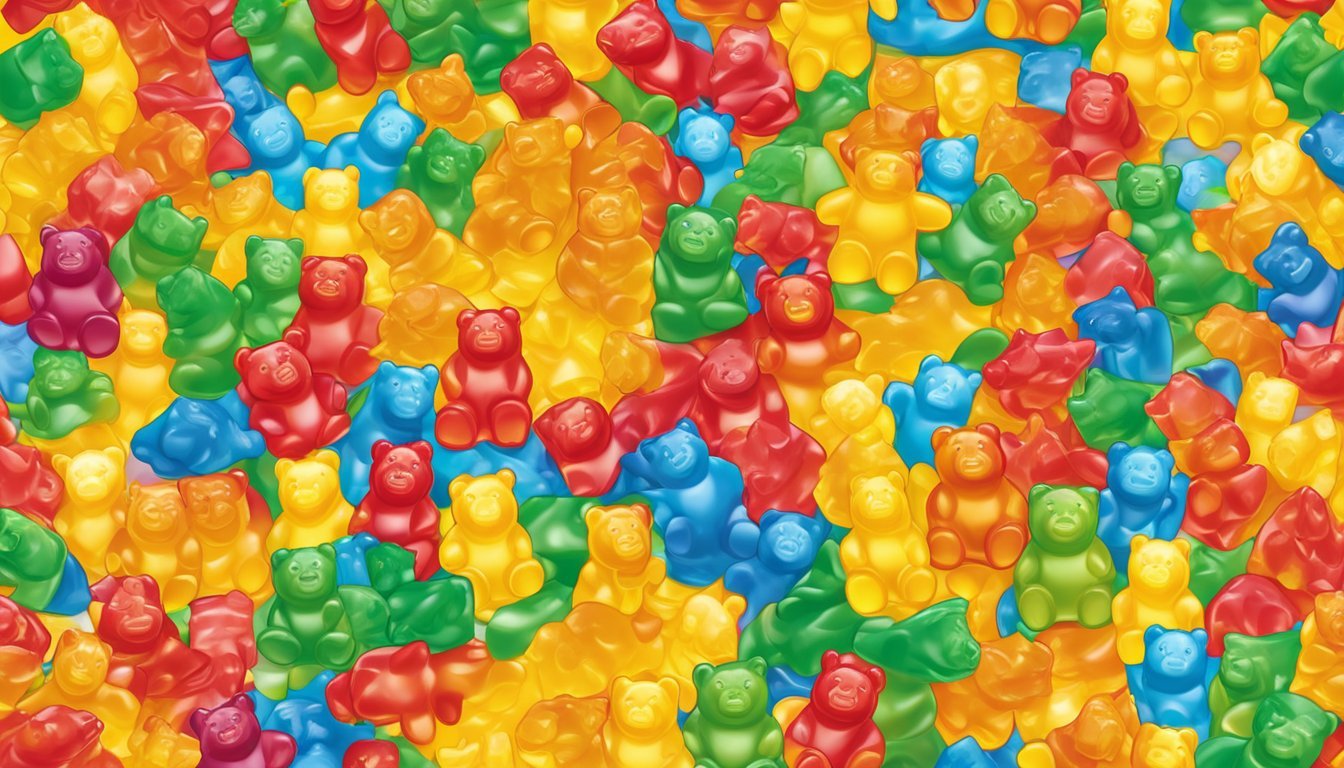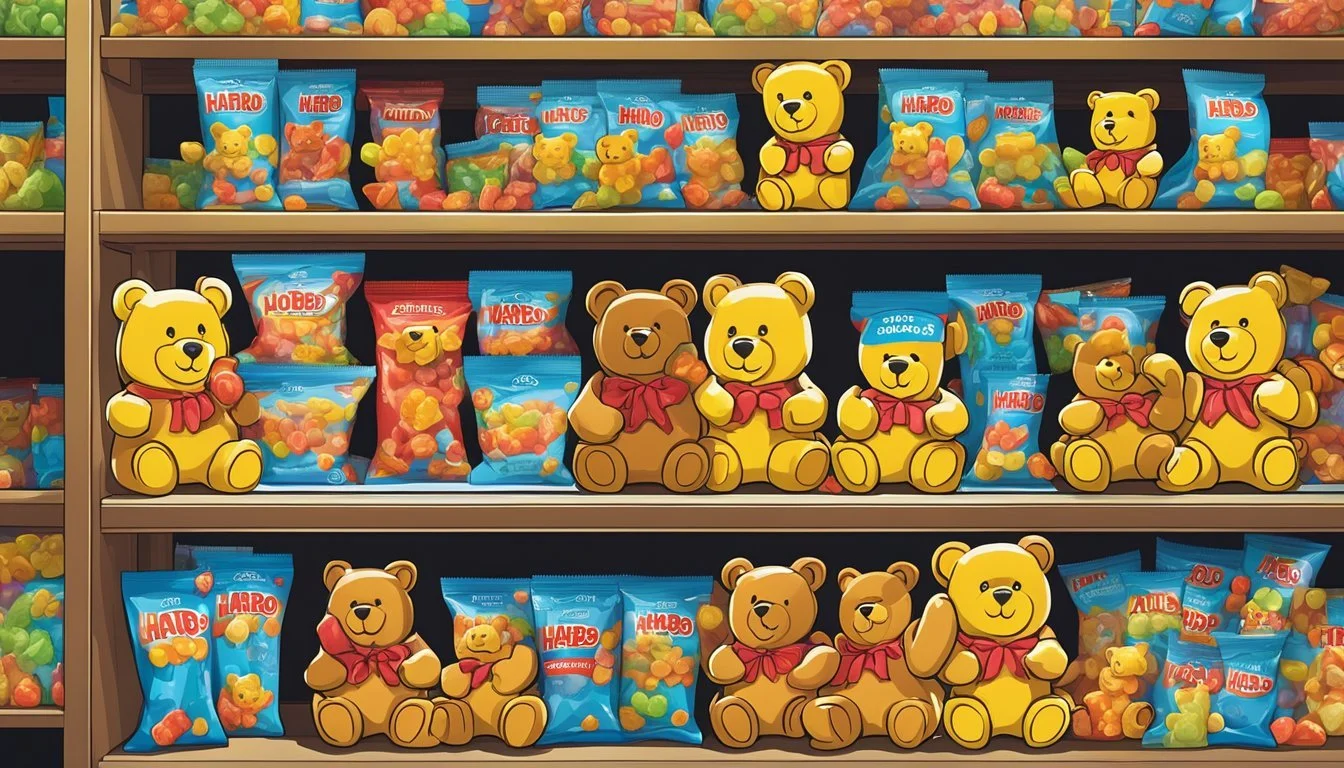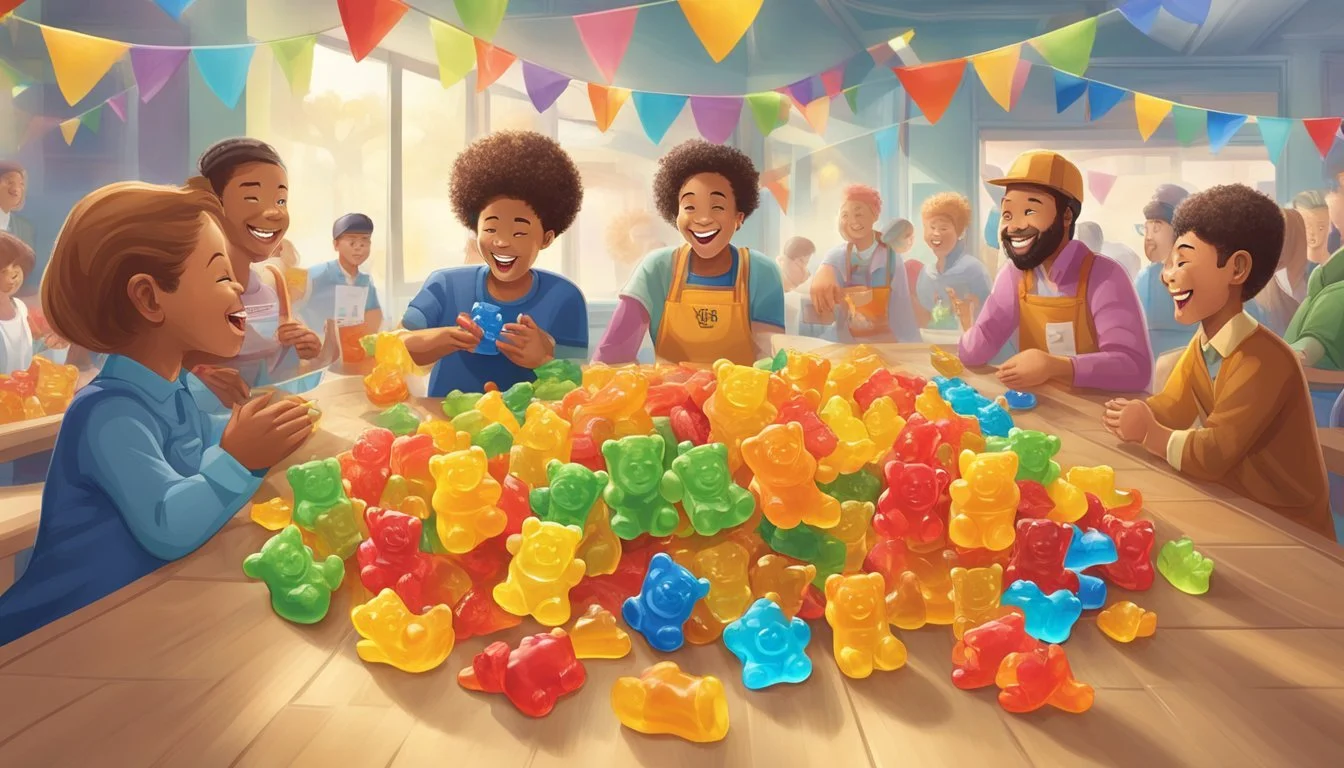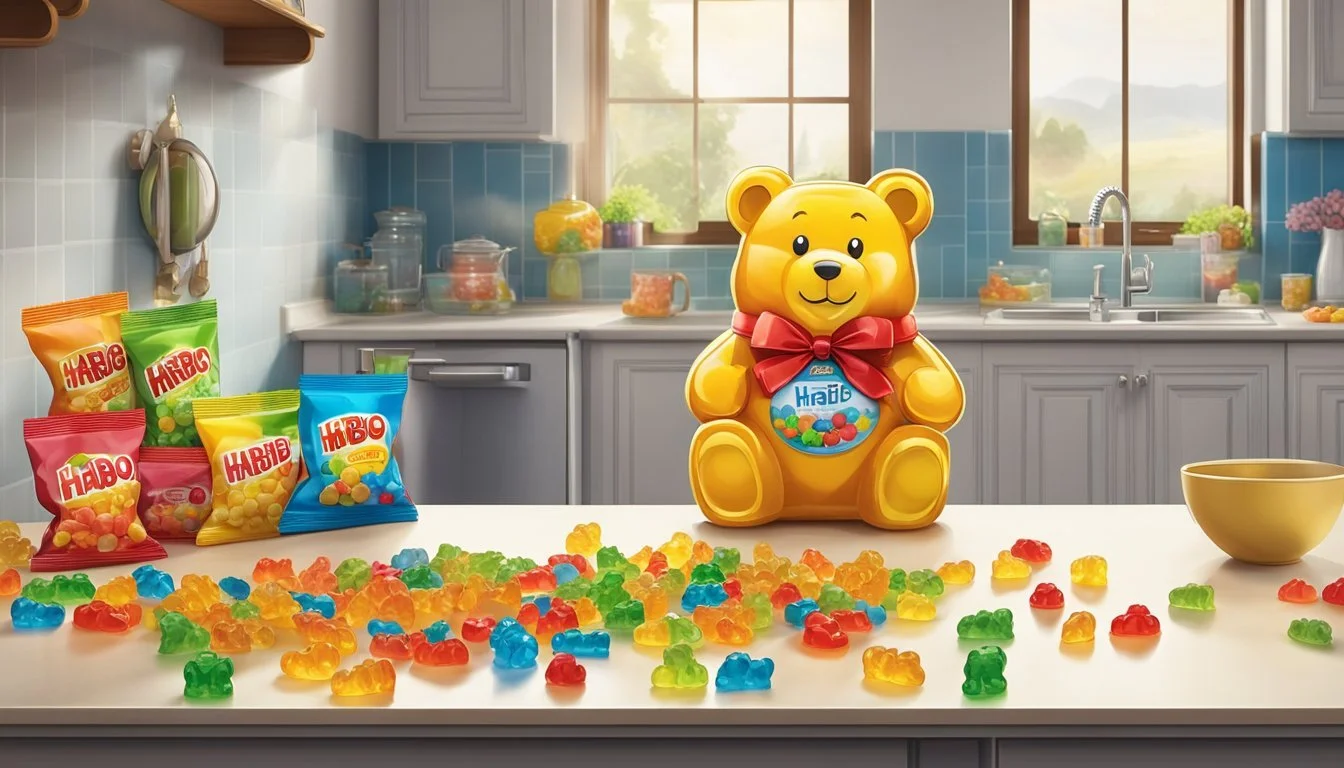How Long Do Haribo Goldbears Last?
Exploring Shelf Life and Freshness
Haribo Goldbears are a popular candy known for their chewy texture and fruit flavors. They have been a beloved treat since their creation in 1922, and their appeal cuts across generations of candy enthusiasts. As with any consumable product, a common question arises regarding their longevity: How long do these gummi bears last? It's important for consumers to understand the shelf life of Haribo Goldbears to ensure they enjoy the candy in its best condition.
The shelf life of Haribo Goldbears, as with most gummy candies, is quite extensive when stored under appropriate conditions. Unopened and kept in a cool, dry place, these candies can last up to one year. The importance of proper storage cannot be understated; it preserves both the quality and the safety of the sweets. After one year, while the gummi bears might still be edible, their optimal taste and texture may have declined.
Despite their long shelf life, it is recommended that consumers check the expiration date specified by the manufacturer. Eating Haribo Goldbears within this specified period ensures an ideal experience of the product's intended flavor and texture. However, even past the expiration date, Haribo Goldbears are not necessarily unsafe to consume; the perceptible quality may simply diminish. Still, adhering to the expiration date is a good practice to fully enjoy what these iconic gummi bears have to offer.
History of Haribo Goldbears
Haribo Goldbears have a notable history that began in Germany and evolved into a global phenomenon. This section explores the origins and expansion of the iconic candy.
Inception and Founder
Haribo, founded in 1920 by Hans Riegel, originates from Bonn, Germany. Hans Riegel Sr. began by creating fruit-flavored gummy candies which led to the introduction of the original gummy bear. The success of his confectionery creations laid the foundation for Haribo's growth and popularity.
Global Expansion
Throughout the decades, Hans Riegel Jr. drove Haribo into new markets, solidifying its presence across the globe. In the 1960s, Haribo's international expansion began in earnest, and by the 1980s, Haribo had entered the American market. The company continued to grow, and as of the early 21st century, Haribo operates numerous factories worldwide, sustaining a massive production output to meet global demand.
Ingredients and Flavors
The enduring popularity of Haribo Goldbears is often attributed to their distinct flavors and the quality of ingredients used in their production. This section explores the flavors that have become classics, the sourcing and quality of the ingredients, as well as the health and nutritional profile of these confections.
Classic Goldbear Flavors
The classic Haribo Goldbear lineup includes a variety of flavors that have become synonymous with the brand. The iconic flavors are:
Apple (Green)
Strawberry (Red, also representing raspberry in some regions)
Lemon (Yellow)
Orange (Orange)
Each Goldbear offers a distinct taste, ensuring a fruity mix that appeals to different palates.
Ingredient Quality and Sources
Haribo takes pride in using high-quality ingredients for its gummy bears. Key components include:
Sugar: Provides sweetness to the gummies.
Gelatin: A gelling agent sourced from animals, giving the bears their chewy texture.
Glucose Syrup & Dextrose: Derived from corn, these deliver additional sweetness and are pivotal in texture formation.
Citric Acid: (how long does citric acid last?) Adds a tangy flavor and acts as a preservative.
Starch and Pectin: Used as thickening agents.
Other ingredients such as natural flavors and coloring agents like yellow 5, red 40, and blue 1 are used to enhance taste and visual appeal. Haribo utilizes carnauba wax and beeswax as glazing agents to give the bears a shiny exterior.
Health and Nutritional Information
Haribo Goldbears are a confectionery product, and their health impact should be considered in the context of a balanced diet. They primarily contain:
Calories: Derived largely from sugar and corn syrup (how long does corn syrup last?).
Protein: Minimal amounts from gelatin.
Fat: Typically negligible, as the candies are fat-free.
It is important for consumers to be aware of the presence of artificial colors and flavors, as well as allergens like gelatin. Goldbears are also not suitable for vegetarian or vegan diets due to the inclusion of gelatin. Moderation is recommended, as with all sugary treats.
Manufacturing Process
The process of producing Haribo Goldbears is intricate and requires a precise balance of ingredients and conditions within the factories. Each step, from the selection of raw materials to the final packaging, is carefully controlled to ensure that the famous chewy texture and flavor remain consistent.
From Raw Ingredients to Gummies
In the factory, Haribo Goldbears begin their life as a mixture of raw ingredients. A specific recipe is used, which typically includes sugar, gelatin, and various flavorings and colorings. The ingredients are combined in large industrial mixers with careful application of heat. It is critical to heat the mixture to the correct temperature to achieve the gummies' signature chew.
Mixing: Ingredients are accurately measured and mixed.
Heating: The blend is heated to precisely melt its components into a homogeneous mixture.
Molding: The hot liquid is then poured into molds that give the gummies their bear shape.
Setting: The molds undergo a cooling process where the gummies set and develop their chewy texture.
Packaging Methods
Once the gummies have set and are released from their molds, they are transported to the packaging area. Here, they will be encased to preserve their freshness and extend their shelf life.
Inspection: Fully set gummies are inspected for quality.
Sorting: Gummies are sorted by color and flavor.
Bagging: Each bear is carefully packaged into bags, ensuring an assortment of flavors and colors.
Sealing: Bags are then sealed to lock in the flavor and extend the food's shelf life.
The sealed packages of Goldbears are then boxed and ready for distribution, providing fans worldwide with the iconic Haribo chew. Each Haribo factory is designed to optimize these processes, maintaining the highest standards of quality and efficiency in creating this beloved confectionery.
Storage and Shelf Life
When it comes to Haribo Goldbears, maintaining their freshness and prolonging their shelf life relies heavily on proper storage conditions and understanding the implications of expiration dates.
Optimal Storage Conditions
Storing Haribo Goldbears in the right conditions is crucial for preserving their quality. Moisture and direct sunlight are the enemies of gummy candy. To ensure the longest shelf life, one should keep Haribo Goldbears in a cool, dry place. Ideally, temperature control is key – a stable room temperature or slightly below is preferable.
Avoid moisture: Ensure the storage area is free from humidity to prevent spoilage.
Keep away from sunlight: Store the candies in a dark cupboard or pantry to protect them from the degrading effects of light.
Understanding Expiration Dates
Haribo Goldbears come with expiration dates that serve as a guide to food safety and freshness. While they don't spoil in the traditional sense due to their high sugar content acting as a preservative, their texture and taste can deteriorate over time.
Shelf life: Typically, Haribo Goldbears have a shelf life of up to 18 months.
Post-expiration: It's common for them to remain edible for several months past their expiration date if stored correctly, though quality may decline.
Spoilage signs: Any signs of mold, discoloration, or an off smell are indicators that the Goldbears should be discarded.
By adhering to these storage guidelines and paying attention to expiration dates, consumers can enjoy Haribo Goldbears at their best for as long as possible.
Cultural and Brand Significance
Haribo Goldbears have not only been a staple in the candy market but have also smartly woven themselves into the very fabric of candy culture across generations and national boundaries.
Haribo's Place in Candy Culture
In Europe, Haribo Goldbears are synonymous with the gummy bear category, so much so that they are often seen as the original standard for gummi bears. Since their introduction a century ago, these sweets have transcended their status as mere food items to become cultural icons. The brand celebrated its 100th birthday in 2020, signifying its longevity and enduring popularity. In many European countries, Haribo Goldbears are a part of festivities and are iconic enough to be worn like party hats as a mark of celebration.
Consumer Relationships and Generational Appeal
Haribo has formed a deep relationship with consumers, often being integral to family celebrations and personal joys. This connection spans multiple generations; it's not uncommon for American households to have adults who grew up with Haribo and are now introducing their tantalizing flavors to their children, continuing a sweet lineage. Moreover, the appeal of Goldbears isn't confined to mixed assortments - single-flavor bags have made it possible for individuals to enjoy their favorite taste, showing Haribo's responsiveness to consumer desires for personalized experiences.
Varieties and Limited Editions
Haribo Goldbears have a diverse range of flavors and often release limited editions to the delight of consumers, introducing unique twists on the classic gummy bear.
Range of Haribo Goldbear Varieties
Haribo Goldbears traditionally come in a mix of fruit flavors, each selected to provide a unique tasting experience. Regular varieties utilize fruit juice and flavorings to create a lineup that includes lemon, apple, orange, pineapple, raspberry, and strawberry. Each flavor is crafted to offer a balance of sweetness and tanginess, often incorporating natural ingredients like elderberry extract to achieve the distinct taste profiles associated with Haribo Goldbears.
Special Editions and Collaborations
In addition to their classic offerings, Haribo occasionally releases limited edition flavors and shapes to commemorate special occasions or as part of marketing collaborations. For instance, in celebration of milestones such as the 100th birthday of Goldbears, Haribo has released limited edition mixes that include new flavors like blue-raspberry and single-flavor bags highlighting popular individual tastes such as pineapple. Seasonal varieties, like the Summer Edition Goldbears, provide a limited-time selection of flavors that may include tropical fruits such as mango, kiwi, and passion fruit. These special editions are typically available for a limited time and often become collector's items for enthusiasts. Locations like Myrtle Beach and Pleasant Prairie in Wisconsin may see these varieties in local retail outlets, depending on distribution and regional availability.
Consumer Engagement
Haribo engages with its consumers through strategic marketing and by valuing customer feedback for product development. These efforts help maintain the popularity of its gummies, especially the iconic Goldbears.
Marketing and Corporate Communications
Haribo capitalizes on nostalgia and joy in its marketing strategies, promoting its Goldbears as a treat that delights both children and adults. Corporate communications emphasize the brand's heritage and the emotional connection consumers have with gummy candies. Marketing campaigns are crafted to appeal to candy lovers across generations, reinforcing the message that Haribo gummies are a source of happiness.
Strategies include:
Celebrating the historical legacy of Haribo Goldbears.
Utilizing slogans that evoke sentimental value.
Focusing on the joy that gummies bring to all age groups.
Customer Feedback and Product Development
Haribo places a significant emphasis on customer feedback, using it as a compass for product development and refinement. Input from candy lovers is actively sought through various channels and is pivotal to the company's innovation process. Gummy enhancements and new flavor introductions often reflect consumer preferences and feedback.
Feedback Mechanisms:
Online surveys and social media engagement
Direct customer inquiries and feedback forms
Market research and analysis
In this manner, Haribo ensures that their gummies, including the Goldbears, remain a favorite among consumers by keeping a close ear to the ground and adapting their products to meet evolving tastes and preferences.
Frequently Asked Questions
In this section, key insights about the shelf life and storage of Haribo Goldbears are addressed to inform curious consumers.
Addressing Common Inquiries
Do Haribo Goldbears expire?
Haribo Goldbears do not expire in the traditional sense. They have a "best by" date which serves as a guideline for optimal taste and quality, rather than a strict expiration date. Proper storage can help maintain their quality longer.
What is the proper way to store Haribo Goldbears to extend their shelf life?
To ensure Haribo Goldbears retain their intended taste and texture, they should be stored in a cool, dry place, such as a pantry or kitchen cabinet, away from direct sunlight and heat.
Are there any non-food uses for Haribo Goldbears?
While Haribo Goldbears are primarily consumed as a snack, they have been used creatively in various crafts and even as educational tools in sorting or counting activities.
Can Haribo Goldbears be used in cooking or baking?
Haribo Goldbears can be melted down using a rolling pin or other methods to incorporate them into recipes. They can also be used as decorative elements on cakes and cupcakes.
Do Haribo Goldbears contain any special additives like vitamins or supplements?
Haribo Goldbears do not contain added vitamins or supplements. They are a gelatine-based gummy candy designed for snacking, not as a source of nutrition.
Can someone allergic to milk consume Haribo Goldbears?
Haribo Goldbears do not list milk as an ingredient. However, it's important for consumers with allergies to check packaging labels for the most updated ingredient information.
Is it safe to take Haribo Goldbears on vacation to different climates?
Haribo Goldbears can be taken on vacation, but it's important to keep them in a sealed container or bag to prevent them from melting or attracting moisture in humid climates.
Has there ever been a Haribo Goldbears taste test or comparison with other candies?
Numerous taste tests have been conducted by consumers and organizations comparing Haribo Goldbears to other gummy candies. The results vary based on personal preference.
Are Haribo Goldbears related to the Haribo Smurfs candy?
Haribo produces a variety of gummy candies, including a line shaped like Smurfs. While they are part of the same brand, they are a different product with their own unique taste and shape.










